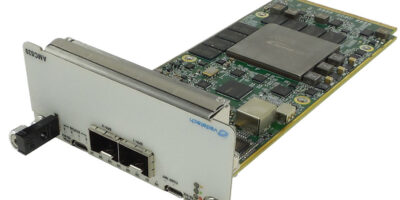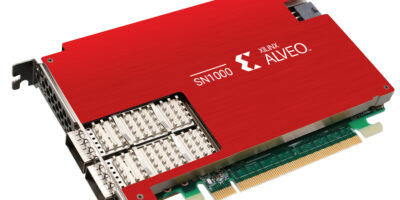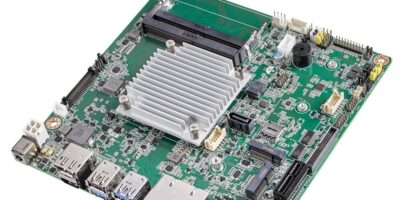Addressing the demands of the modern data centre, Xilinx has introduced a family of Alveo SmartNICs.
The Alveo SN1000 is the industry’s first composable SmartNIC offering software-defined hardware acceleration for all function offloads, says Xilinx. They are designed to optimise networking performance by directly offloading CPU intensive tasks. They have an open architecture and use the Vitis Networking platform and industry standard, high-level programming languages such as P4, C, and C++. Software developers can create network functions, protocols, and applications that operate in hardware and quickly compose or adapt existing, network functions to accommodate new protocols and applications without the expenditure incurred with hardware replacements.
The SN1000 SmartNICs provide software-defined hardware acceleration for networking, security, and storage offloads, such as Open vSwitch and virtualisation acceleration (Virtio.net). Security offloads include IPsec, kTLS and SSL/TLS and accelerated storage applications including Virtio.blk, NVMe™ over TCP, Ceph, and compression and crypto services.
The SmartNICs are based on the Xilinx 16nm UltraScale+ architecture and powered by the low-latency Xilinx XCU26 FPGA and a 16-core Arm processor. SN1000 SmartNICs deliver dual-QSFP ports for 10/25/100Gbits per second connectivity with what is claimed to be leading small packet performance and a PCIe Gen 4 interconnect. The SN1000 is offered in a full height, half length (FHHL) form factor in a 75W power envelope.
The Alveo SN1000 SmartNIC will be generally available in March 2021.
At the same time as introducing the SmartNIC family, Xilinx also introduced Smart World AI video analytics applications, an accelerated algorithmic trading reference design and the Xilinx App Store.
The AI video analytics platform is supported by an ecosystem of partner solutions for complex, latency-sensitive AI video inferencing applications. The Xilinx Smart World platform is powered by the Video Machine-learning Streaming Server (VMSS) and delivers whole application acceleration to support multiple neural networks on a single Alveo accelerator card at deterministic sub-100ms pipeline latency.
Today, the Xilinx Smart World ecosystem solutions available include a smart city and smart retail solution by Aupera which combines Aupera’s intelligent, video processing with Alveo accelerators. There is also Mipsology’s toolset for easy migration of existing AI applications from GPU-based architectures to the Alveo platform. A third partner, DeepAI, offers AI training at the edge on Alveo accelerators with up to a 10x performance per cost advantage compared to GPU-based solutions.
The Vitis development platform now includes an accelerated algorithmic trading (AAT) reference design which gives software developers the ability to quickly and cost-effectively deliver sub-microsecond trading performance without the need for custom hardware development.
AAT, implemented on Alveo accelerator cards, provides a modular design that includes all the necessary components for an end-to-end, low-latency trading solution. Each module can be customised using C and C++ in the Vitis platform to meet each firm’s specific needs.
The AAT reference design is available today at no cost for Alveo accelerator card customers.
The first FPGA app store has been announced by Xilinx. It has ready-to-deploy accelerated applications from Smart World AI video analytics to anti-money laundering and live video transcoding. Developed by Xilinx ecosystem partners, the containerised pre-built applications provide an easy way to evaluate, purchase and deploy accelerated applications in minutes, says Xilinx.
http://www.xilinx.com







